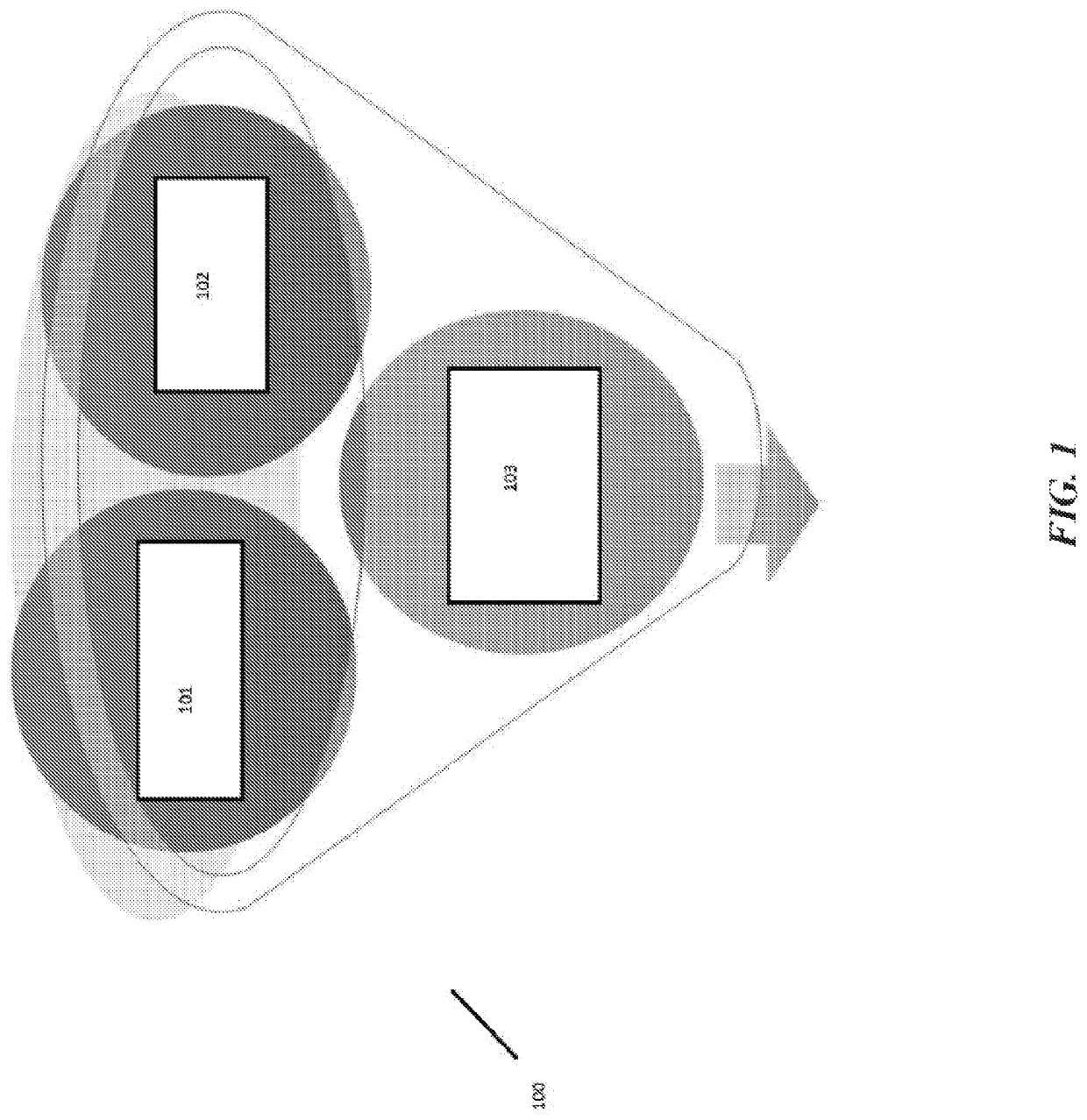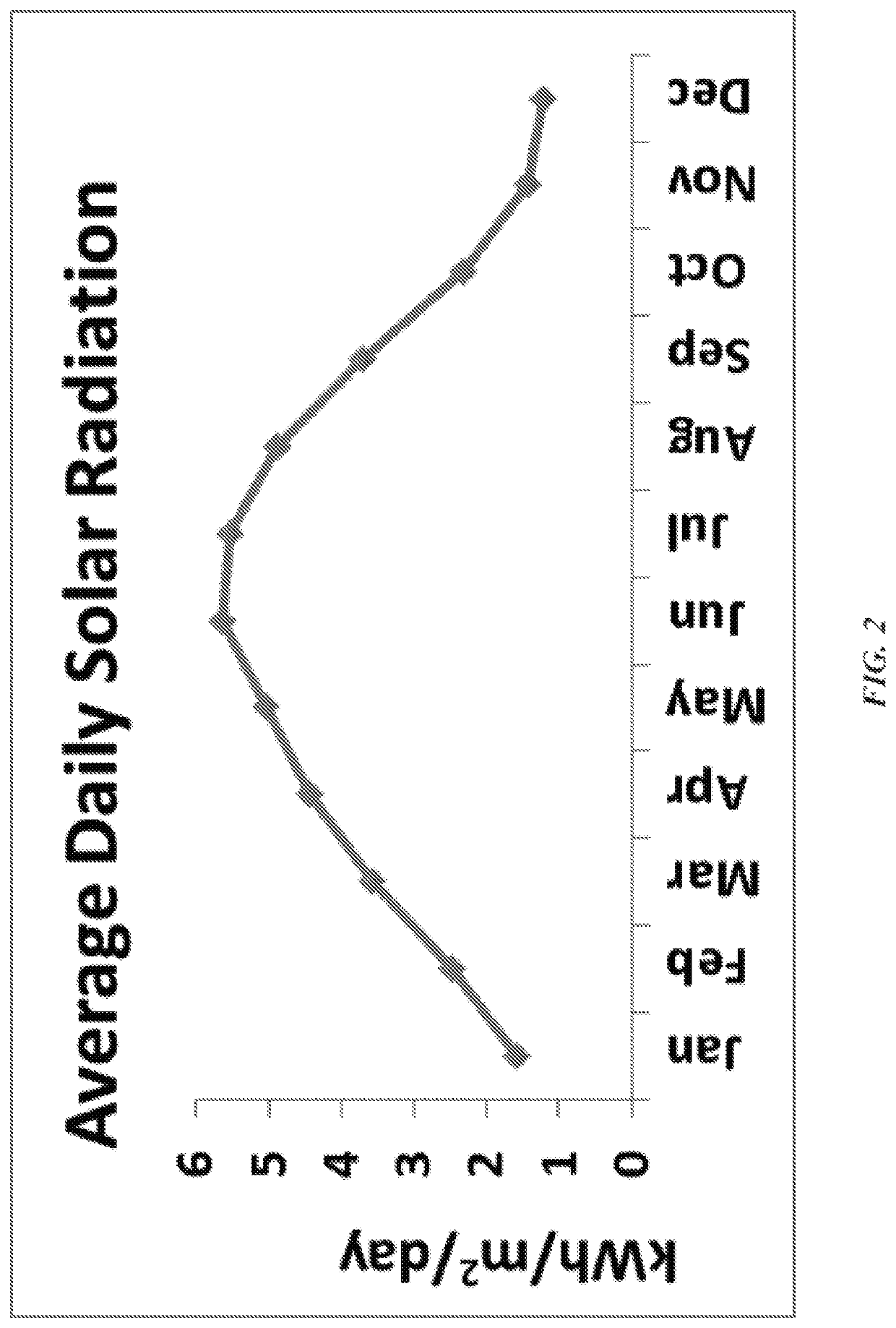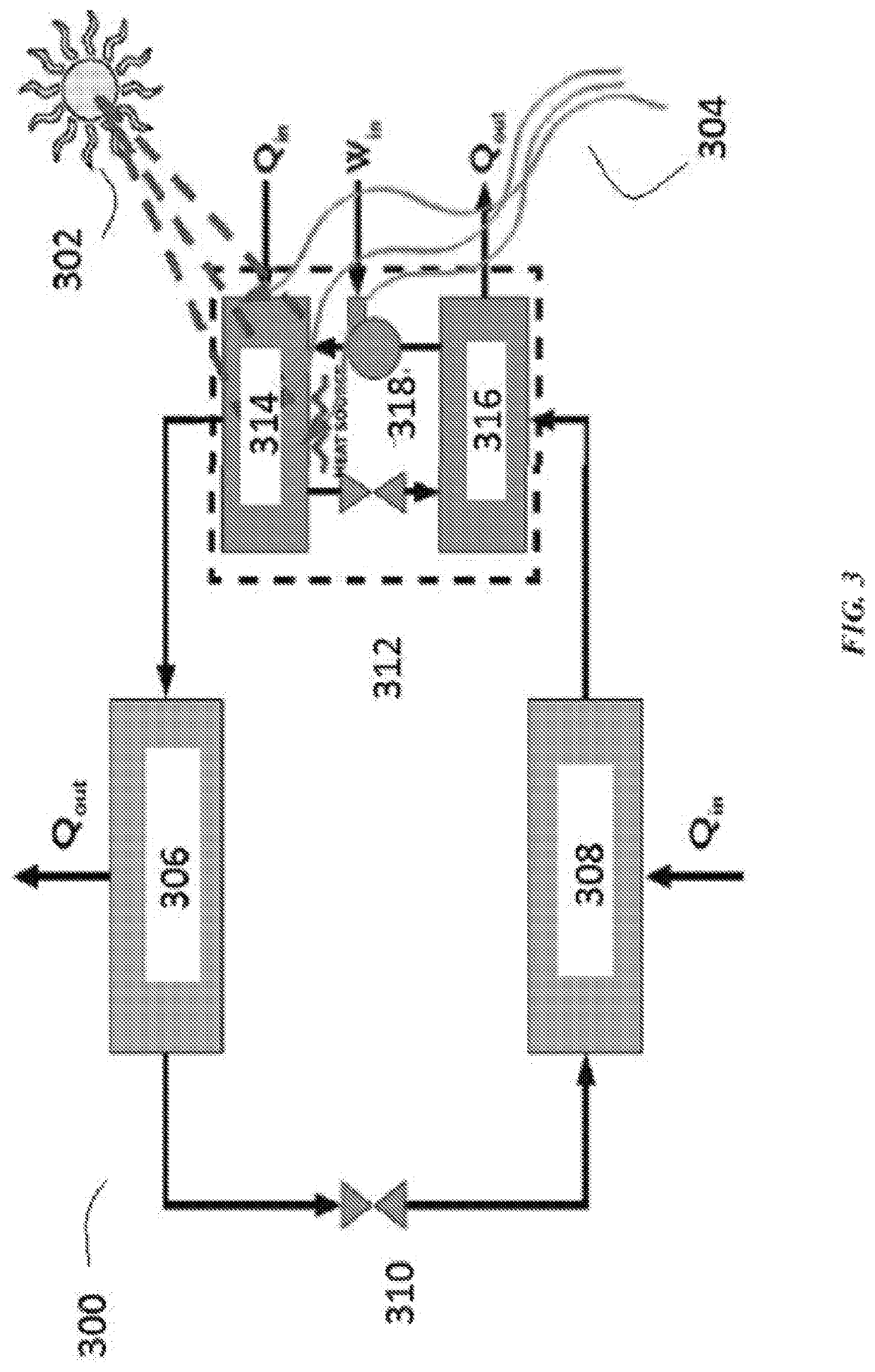Microwave assisted hybrid solar vapor absorption refrigeration systems
a hybrid solar and refrigeration system technology, applied in the field of hybrid solar vapor absorption refrigeration systems, can solve the problems of reducing the efficiency of capture and use of anergy, reducing the efficiency of solar energy storage, so as to achieve high exergy efficiency and increase the exergy efficiency
- Summary
- Abstract
- Description
- Claims
- Application Information
AI Technical Summary
Benefits of technology
Problems solved by technology
Method used
Image
Examples
example
[0098
[0099]In a particular implementation, a hybrid refrigeration system for semi-trucks (see FIG. 5) to aid in the sustainability in the cold chain. FIG. 5 depicts a semi-truck body with dimensions of 2.6 m×16.5 m×2.8 m. The Volume outside is 120 m3 with an inside volume of 116 m3. FIG. 5 also lists the density of air at 25° C. to be 1.184 kg / m3. The specific heat capacity of air to be Cp 1.005 kJ / kg° C. The mass of air inside the trailer is mair 137 kg. To determine cooling load, initial trailer temperature is 25° C., and desired trailer temperature is 5° C. The desired cooling time (t) is 2 hours (7200 seconds). With this information, the following can be seen:
Cooling Load of Empty Trailer (QTr)=mairCpΔT
QTr1=2,760.62 kJ
[0100]PowerNeeded(PTr)=QTrt
PTr=383.5 Watts
[0101]The following is used in determining heat seepage through trailer walls:
[0102]
Material Thermal ThicknessConductivityThermalMaterial(L)(k)Resistances (R)Aluminum10 mm205Wm·K4.9×10-5m2KWPolystyrene305 mm 0.02...
PUM
 Login to View More
Login to View More Abstract
Description
Claims
Application Information
 Login to View More
Login to View More - R&D
- Intellectual Property
- Life Sciences
- Materials
- Tech Scout
- Unparalleled Data Quality
- Higher Quality Content
- 60% Fewer Hallucinations
Browse by: Latest US Patents, China's latest patents, Technical Efficacy Thesaurus, Application Domain, Technology Topic, Popular Technical Reports.
© 2025 PatSnap. All rights reserved.Legal|Privacy policy|Modern Slavery Act Transparency Statement|Sitemap|About US| Contact US: help@patsnap.com



